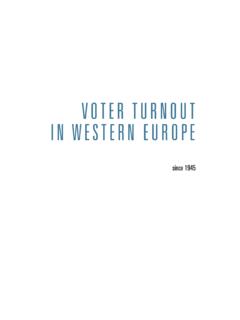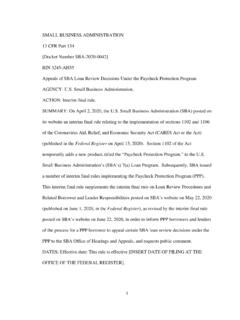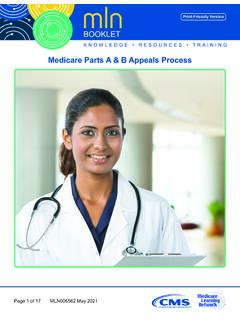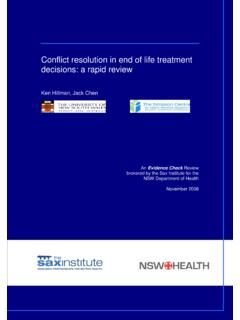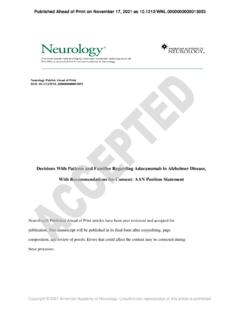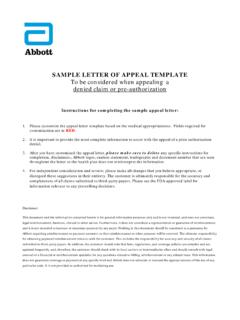Transcription of Direct Democracy - IDEA
1 3 Direct DemocracyInternational IDEA Constitution-Building PrimerInternational IDEA Constiution-Building Primer 3 Elliot BulmerDirect DemocracyInternational IDEA Constitution-Building Primer 3 2017 International Institute for Democracy and Electoral Assistance (International IDEA)Second edition First published in 2014 by International IDEA International IDEA publications are independent of specific national or political interests. Views expressed in this publication do not necessarily represent the views of International IDEA, its Board or its Council electronic version of this publication is available under a Creative Commons Attribute-NonCommercial-ShareAlike (CC BY-NC-SA ) licence. You are free to copy, distribute and transmit the publication as well as to remix and adapt it, provided it is only for non-commercial purposes, that you appropriately attribute the publication, and that you distribute it under an identical licence.
2 For more information on this licence visit the Creative Commons website: < >International IDEAStr msborgSE 103 34 StockholmSwedenTelephone: +46 8 698 37 00 Email: < >Cover design: International IDEAC over illustration: 123RF, < > Produced using Booktype: < > ISBN: 978-91-7671-108-81. 3 Advantages and 3 Where is Direct Democracy used?.. 32. What is the issue?.. 43. Forms of Direct 64. Direct Democracy : advantages and 8 Arguments in favour of Direct 8 Arguments critical of Direct 10 Direct Democracy in the political system: occasional supplement or regular feature?. 135. Institutional choices and design 15 Mandatory 15 Optional 15 Who can call a referendum or initiative?.. 16 Rejective (veto) or 17 Binding or 17 Exclusion of certain 17 Turnout 17 Referendum provisions in federal 18 Durability of the 18 Single-subject 19 Multi-option 20 Question 20 Electoral 20 Campaign 21 Extent of constitutional 21 Referendums and the distribution of 216.
3 Alternatives to Direct 23 Dissolutions and new 23 Participatory 24 Opinion polls and focus 247. 258. decision -making 32 About the 32 About International 32 About this 33 International IDEA 31. Introduction1. IntroductionDirect Democracy describes those rules, institutions and processes that enable the public to vote directly on a proposed constitutional amendment, law, treaty or policy decision . The most important forms of Direct Democracy covered in this Primer are referendums and and risksDirect Democracy enables people to vote on important issues that may be excluded from, or cut across, representative party politics. The decision of the popular majority can be expressed beyond representative processes that are potentially distorted and , mechanisms of Direct Democracy may become tools of majoritarian populism, by which leaders are able to bypass and weaken representative processes by appealing directly to the people.
4 They raise questions of voter competence and governability, and run the risk of polarizing political opinions. There are also considerations of cost, time and logistics. Where is Direct Democracy used?Referendums are occasionally used throughout the world as an extraordinary measure, most often to ratify or amend a constitution or to decide on questions of statehood. Some democracies make more extensive and regular use of referendums and initiatives, making these instruments complementary to representative International IDEAD irect Democracy2. What is the issue? Democracy means rule by the people. In most modern countries, however, the population is too large to be constantly engaged in decision -making.
5 For this reason, modern democratic states are almost universally based on principles of representative government. This means that, although the people do not govern themselves directly, they do decide who should govern and, critically, who should be removed from government through free, fair, regular and competitive elections. However, there are several reasons why a representative assembly might not provide a faithful and accurate reflection of the people s views on every particular issue: In almost all democratic societies, elected representatives are typically drawn from the higher social classes, whose wealth, education or status differentiates them from the average citizen. Throughout the world, representative bodies usually under-represent women, marginalized minorities and those who stand outside of party politics.
6 Representatives are chosen for their general stance across a range of policy issues, not all of which are equally important to the voters. Factors such as their record in office, character, local connections and competence can also influence election outcomes. It is therefore possible that a legislative majority elected, say, on its handling of the economy, may not necessarily be in agreement with the popular view on, say, a particular social- or foreign-policy decision . Representatives are typically chosen for a term of several years, and new issues may emerge that did not feature in previous election campaigns. The International IDEA 52. What is the issue?public s view of issues may also change between elections, such that the legislative majority and popular majority differ with respect to those issues.
7 Representatives living in the capital and enjoying a privileged position can easily be influenced by special interests. They live in a world of expense accounts, foreign travel, official cars and high society they can easily ignore the everyday needs and interests of those who elected may therefore wish to consider mechanisms of Direct and participatory Democracy that have been developed to complement the representative International IDEAD irect Democracy3. Forms of Direct democracyIn this Primer, the term Direct Democracy is used to designate mechanisms that enable the electorate to vote on a specific law, treaty, constitutional amendment, policy or other public decision . The main forms of Direct Democracy are referendums (the alternative plural form referenda is also widely used) and citizens give the people a Direct vote, which may be binding or advisory, on a specific political, constitutional or legislative issue that is referred to them by governing institutions (presidents, cabinets, parliaments etc.)
8 The people s role is usually limited to ratifying or repealing decisions that have already been taken by such institutions or to accepting or rejecting propositions that these governing institutions have put 's initiatives give the electorate a Direct vote, which may be binding or advisory, on a specific political, constitutional or legislative issue that is initiated by the people. They precede the decisions of governing institutions, and in some jurisdictions may even enable new laws or constitutional amendments to be adopted without the consent of the elected legislature. They are typically proposed by a petition with a certain number of mechanisms are difficult to classify. For example, the abrogative referendum in Italy has many characteristics of an initiative, in that it can be triggered by a public petition, but it is usually classed as a referendum because International IDEA 73.
9 Forms of Direct democracynew laws cannot be proposed; it only allows people to vote retrospectively on repealing a law that has been enacted by terminology for Direct - Democracy mechanisms is not standardized. Different terms are used in different counties to describe similar institutions and processes. Citizens initiatives are sometimes also known as ballot propositions or citizen-initiated referendums, depending on the jurisdiction and context. Referendums conducted at the discretion of the government have often been called plebiscites, a term that may have negative connotations in some contexts. For clarity, this Primer uses the terminology set out in Direct Democracy : The International IDEA Handbook (2008).
10 Another mechanism that is frequently referred to as a form of Direct Democracy is the recall vote, which enables citizens, usually following a petition signed by a certain number of constituents, to vote on the removal from office of a representative or elected official. Recall does not, however, enable people to vote on a substantive legislative or policy decision , so it is best considered as a variation on the rules of a representative Democracy ; as such, it is not covered in this Point 1 What problems of representative Democracy are evident in your country? Do political elites effectively serve and represent the people, or do they pursue their own personal or partisan interests? Are the majority of the people apathetic or disaffected from public life?


